This Leg 5 Documentary tracks the fleet as they leave Auckland, the ‘City of Sails’ before starting their epic voyage through the Southern Ocean, rounding Cape Horn, entering to the Atlantic Ocean and finishing in Itajaí, Brazil. Catch all the drama and action as the teams experience the most extreme conditions so far in this race.
Expect more like this to be uploaded to the Official Volvo Ocean Race YouTube Channel in the future. Get all the latest updates on www.VolvoOceanRace.com
source


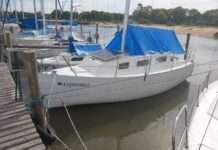
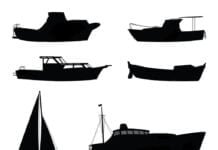
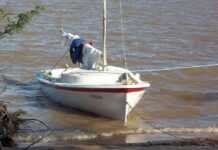




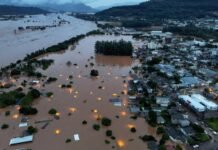
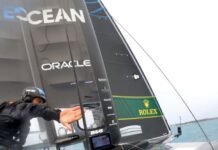





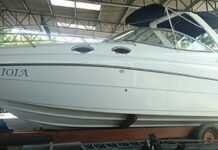
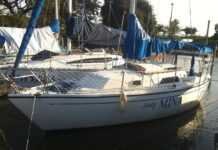


28:50 whats the name of the song please ?
Negligent to race with such unsound boats.
🙂
hard work
Now I understand why Volvo decided to produce a uniform boat for every team 😉
The quality of those boats form 2014-15 was really impressive in terms of defects 😉
A lot of informative and useful comments on the number of serious repairs needed. I wonder when they did the repairs if they made the area of hull or mast stronger than before. At the first opportunity did they strengthen other areas of the boat. The designs were woefully inadequate and could have lead to lawsuits if death or permanent injury had resulted.
Are these yachts so delicate because the engineers have sacrificed a proportion of the durability/weight so they can go faster? Surely normal superyachts are more tougher than these right?
Bring these back!
Why don't these boats have some sort of dodgers for crew in conditions like this??
wtf that rigs are chit
For me, this is so much more exciting than the america cup.
Wow! Amazing Sailors in Amazing Sail boats, Sailing in some Crazy Conditions.
Why the hell did I have to confirm my age for this? Age restriction for sailing? WTF xD
Every boat in this leg of the race but one suffered a major structural failure in this race – so wrong, and unnecessary. There may be a design problem and or quality/production problem involved in of each of these failures, but those are not the root problems. The REAL problem is a YACHT RACING CULTURE and a DESIGN RULE that places absolute speed above the qualities of seakindliness and SEAWORTHINESS. The result are the engineering monstrosities you see on display here, incredibly fast but intrinsically unseaworthy vessels.
When 'Tony' C.A. Marchaj wrote his seminal "Seaworthiness: the forgotten factor" [revised edition: Adlard Coles Nautical, 1996] back in 1986 there was already a long history of yacht racing disasters attributable to modern yacht design: Admiral's Cup of '77, Fastnet in '79 and others. He outlines in great mathematical details the problems inherent ultra-light displacement, overly beamy, and over-canvassed yachts. The situation has only become more and more extreme in the last two decades. To this devil's brew has been added light weight composite construction techniques that simply cannot stand up to the incredibly high dynamic and impact loads placed upon them.
This situation has transferred too much RESPONSIBILITY of the security of the vessel and safety of the crew upon the skill of the crew, 'safety' systems, and the availability of outside assistance – NOT GOOD.
Unseaworthy is now the new normal – we'll see how long sponsors are willing to put up with the situation – or rather pay for it. Unfortunately this unhealthy attitude is spilling over into more conventional production boats and more casual sailors – also not good.
What is REALLY wrong is how yachtsmen remain willfully blind to the flaws they build into their yachts in the MAD QUEST for pure and unlimited speed. Racing on the open ocean is exciting and challenging at any speed, the desire to do so at an arbitrarily high speeds is motivated only by vanity.; the Southern Ocean will be obliging to punish you for that sin. There is ALWAYS a wave out there that can obliterate your vessel, that is a simple fact of life; the Volvo 70 boats and others like them [IMOCA Open60] have moved into the realm where they cannot handle the stresses of the wind, waves, and weather that are well within the range of normal and survivable for a yacht of that general size but heavier displacement – and smaller rig – and more lateral area in the underwater body.
But these are really clever fellows [and gals now too] aren't they? they've considered every little angle, "The only forgotten factor is seaworthiness".
All these guys are true adventurers, I really enjoyed watching this.
This takes balls to do. I would be scared as shit.
Ian Walker on Volvo Russian Sailing Week смотри в youtube
Русские проводят одноименную лубительскую гонку. На ней бывают звезды с Volvo Ocean Race
I felt so bad for the french team so much effort put in you could feel the weight of the deception in their faces. These guys have balls of steel. I thought I was good with my occasional first places in our beer can phrf races, man this gave me a reality check on my abilities.
Awesome it not nearly enough!
Does anyone know the sighting tool they are using? The yellow portable one? Thanks! Great video!
They still make them out of Carbon Fiber. Hull and Deck….
no designers, sacrificed strength for speed.
I think that is the idea with every boat build. Was the old rule to make the boats only half as strong? heheh
yeah, slow and steady wins the race
That is really good to hear. I was literally getting angry when seeing these boats just break down all the time. Just make the boats a bit more sturdy (and heavy) but they will win in the long run!
they made a new rule where boats have to be stronger
needs more duct tape
It seems that way. They are made of the best,strongest carbon fibers but they engineer it to be as light as possible so when a stronger material is discovered they just make the hull & structure thinner & lighter instead of designing in a margin of safety. In my opinion that's great for racing boats that are close to shore & rescue crews but in races where they are in remote areas & a rescue could be days away that's crazy. I'm sure there are some build guidelines but IMO they have gone to far
are these boats made of paper or something?
my dream job
beautiful sport for the strong and courageous people
Not sure I understand your point about being superstitious. Are you trying to suggest that they respect the sea because they do not use superstitious words?
I appreciate your point about having to push the limits in order to win but every failure reduces their chances of winning.
Also I would add that I did not say the sailors lacked respect. I place the blame more at the door of the designers and rule makers. I have nothing but deep respect for the guys who go to sea in these fragile craft.
I have to say the exact opposite of you. These guys have spent their entire lives on the sea and they respect it very much. There are even certain "words" that they will not say because of maritime superstitions. The fact is that they HAVE to push the limits of machine and man in order to have a "chance" of winning. They know what they are doing every second. To say they don't respect something is disrespectful of them.
holy shit that was awesome.
…
Fascinating stuff it's true but the sailor and boat builder in me just can't relate to all these breakages. The bottom line is that these boats just aren't strong enough for the conditions they find themselves in and the hard way they are sailed. Maybe the consensus is that these failures add to the drama but to me it simply demonstrates a chronic lack of respect for the sea.
Great recap video. Too bad we can't live the excitement the whole way through. Its a shame how many mechanical problems the boats have though, especially how often the seem to loose their mast.
I'm curious… how so?
Amazing leg here, and the media coverage is just perfect… I'm getting excited thinking about how we'll be able to enjoy sailboat races from now on. I love this, I wanna be there.
Nail bitting…literally. You gotta love it.
Thanks for the video. Keep the good job.
Southern ocean looks scary.
Fantastic review. really was a dog fight of a race. Great effort by all!!
the race of lame, ridiculous.
Terrific account of this leg's adventure.
Best of luck for the remainder of the
VOR legs.
With the thoughts of the
recent Clipper Round the World
race and the SF Low Speed Chase
I hope good luck and fortune to be
in their sails.